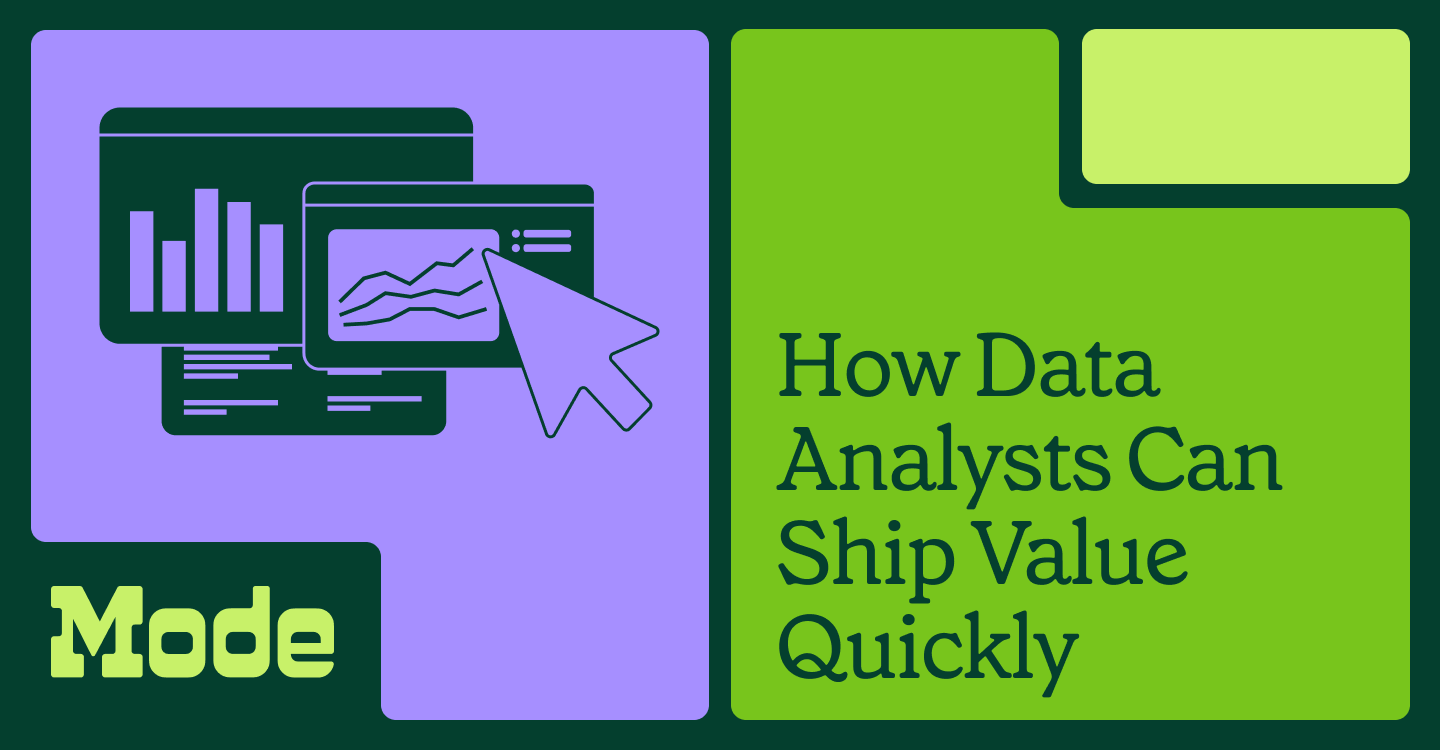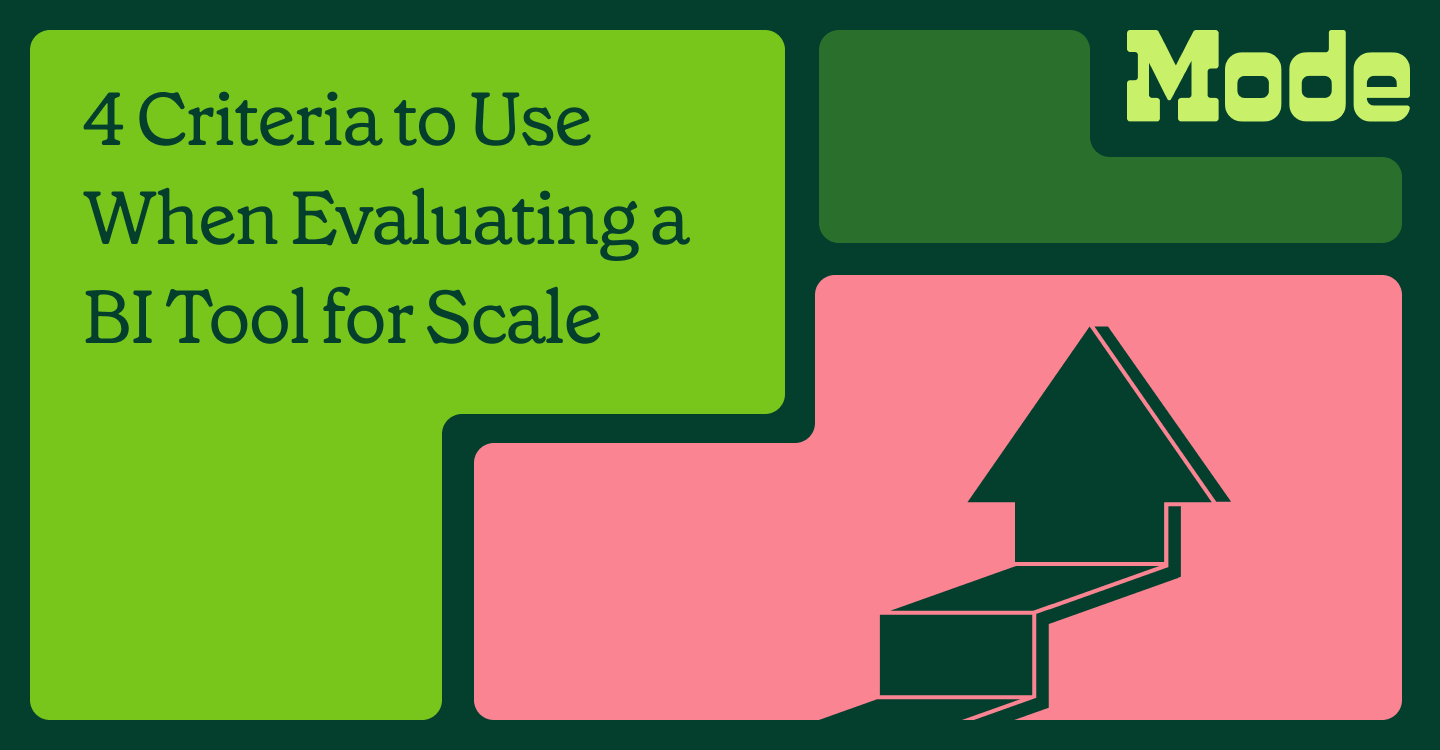At Mode, we believe everyone is analytical. Any time you look for patterns in previous experiences, or make a tradeoff between one option and another, you're analyzing. Improving these skills can only be good for your career; the demand for analytical talent in the workforce is at an all-time high.
The most effective way to improve your analytical skillset is to work on a problem you care about. So at Mode, we encourage everyone who joins the company, whether data analysis is a core part of their job or not, to improve their analytical skills by applying them to their own role. Many begin with the intent to simply learn, and end up with skills that make huge improvements in their daily process.
In this blog series, How We Learn Analytical Skills on the Job, we'll take a look at how three of our colleagues here earned themselves a new skillset:
Alexa Guerra, Senior Manager of Demand Generation
Getting Acquainted
Alexa Guerra joined Mode as an experienced program manager, having run search, display, retargeting and paid social campaigns at PagerDuty. As the manager of a budget, she had to learn how to analyze performance of campaigns through front-end tools provided by publisher platforms, like Google Ads.
“Most tools follow the Adwords model: all conversions are created equally. But that's not really the way B2B marketing works,” Guerra said. “B2B marketing has a much longer funnel, involving multiple touches. So there's an inherent challenge. You have to figure out how to tie the conversions indicated by an out-of-the-box software interface to down-funnel actions.”
Getting Hands Dirty
Her first experience working with Mode's SQL interface came while Alexa was at PagerDuty, working with basic queries set up by another marketer there. “I started taking the queries and reports that were already set up and fiddling with them,” Guerra said. “I would incorporate other data sources and try to answer different questions.”
When she came to Mode, one of her first projects was to upgrade the reporting infrastructure for the marketing team. “When I started, there was reporting set up for basic UTM sources, and some publisher-specific reporting, but there was no holistic view of all our campaign performance in the same place.”
But there was no marketing-embedded analyst to build it for her. So, fresh out of onboarding (including SQL School), and with a directive to ramp up Mode's paid marketing programs, she had to build those reports herself.
“Most of the analytical tools I needed to get started, I had just learned about in SQL School. So I built what I could from that, going back often to reference specific functions, and look up more niche things in StackOverflow,” Guerra said. “Then, if I couldn't get it myself from those online resources, or if I needed to QA something, I would go to one of the analysts on the team here.”
Applying the Skills
One of Guerra's breakthroughs came with the development of Definitions. “At one point, the sales development team flagged that it seemed like analysts were making up a lower percentage of signups and trials than usual,” Guerra said. “We were completely focused on targeting signups that we believed would be able to use Mode effectively right away, so a lot of attention was paid to people with “analyst” in their job title. Fewer analysts in the funnel was concerning.”
Guerra set out to create a new report that could more effectively answer the question of whether folks who were signing up were likely to be able to use Mode effectively. She had to take all the possible “title” fields in Salesforce that someone could use to indicate their job title, and group them into narrower buckets, sometimes with multiple conditions, in order to create a consumable chart to track the trend.
“To do that, especially job title, I had to do a lot of bucketing and parsing of many fields into fewer buckets to make a worthwhile report. But that data structure was relevant for a ton of other potential analysis. So I created a Definition with it, which we still use for new analyses, and the “Signup Sources” report still gets used all the time.”
Guerra's time spent sharpening her analytical skills has paid off. Much of the reporting she needs to deliver is now automated. She spends less time in “spreadsheet land”, and relishes the newfound room in her day for more proactive, strategic projects.
“I can do things now in a few hours or days that once would have taken weeks, or that would have simply required a prohibitive amount of time,” Guerra said. “Now we can make decisions much faster.”
Are you looking for a way to bring deeper analysis into your own role? Try exploring Mode's SQL School and Python tutorials.






